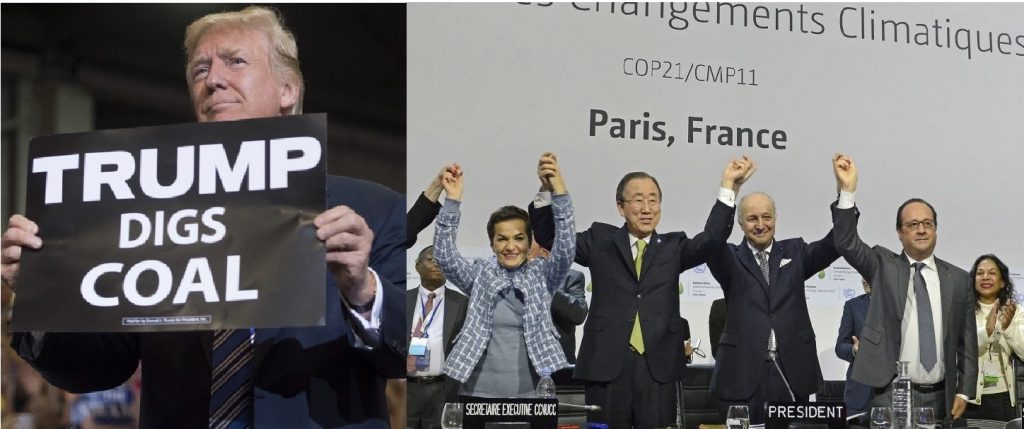
The United States while Donald Trump is still the President, became the first country to officially exit the Paris climate accord on Wednesday. The landmark climate agreement aimed at protecting the planet from the worsening impacts of the climate crisis was signed by 189 countries in 2015 and came into force on 4 November 2016. The accord aimed to keep the global temperature rise below 2C. It also aimed to pursue efforts to limit the temperature increase even further to 1.5C.
In 2017, US President Donald Trump first announced his plans to get out of the agreement. This formal withdrawal has given affect to the process started by the US three years ago. “The United States notified the United Nations of its withdrawal one year ago, on November 4, 2019. Per the terms of the Agreement, that withdrawal takes effect exactly one year after delivery of notification. Today — November 4, 2020 — the United States is no longer a Party to the Paris Agreement,” a US State Department spokesperson said Wednesday.
However, with Democratic President runner Joe Biden already announcing that he will reverse the decision in ’77 days’ says that the withdrawal could be a temporary phenomenon. Joe Biden in a tweet pledged to reverse President Donald Trump’s decision to abandon the accord.
The US which has witnessed record-breaking wildfires and a seemingly unending stream of hurricanes on its Gulf Coast, the US is now the only country to formally pull out of the deal since it was adopted in 2015.
What is the Paris Climate Accord?
The United Nations Climate Change (UNCC) defines Paris Agreement as a Convention which for the first time brings all nations into a common cause to undertake ambitious efforts to combat climate change and adapt to its effects, with enhanced support to assist developing countries to do so. The accord charts a new course in the global climate effort, says the UNCC
The Paris Agreement central aim is to strengthen the global response to the threat of climate change by keeping a global temperature rise this century well below 2 degrees Celsius above pre-industrial levels and to pursue efforts to limit the temperature increase even further to 1.5 degrees Celsius. Additionally, the agreement aims to strengthen the ability of countries to deal with the impacts of climate change.
To reach these ambitious goals, appropriate financial flows, a new technology framework and an enhanced capacity building framework will be put in place, thus supporting action by developing countries and the most vulnerable countries, in line with their own national objectives. The Agreement also provides for enhanced transparency of action and support through a more robust transparency framework.
The Paris Agreement entered into force on 4 November 2016, thirty days after the date on which at least 55 Parties to the Convention accounting in total for at least an estimated 55 % of the total global greenhouse gas emissions have deposited their instruments of ratification, acceptance, approval or accession with the Depositary.
India’s role in combating Climate Change and Paris Accord
In 2015, India played a crucial role in shaping the agreement through the BRICS (Brazil, Russia, India, China, South Africa) and LMDC (Like-Minded Developing Countries) country groups. In October 2015, ahead of the annual Conference of Parties in Paris, India had announced its ambitious INDCs.
India voluntarily pledged a reduction in its emissions intensity of its Gross Domestic Product by 33 to 35 per cent by 2030, below 2005 levels. It further announced that by 2030, it would increase the share of non-fossil fuels in the installed energy capacity to 40 per cent. It also set a target of creating an additional carbon sink to absorb 2.5 to 3 billion tonnes of carbon dioxide by increasing its forest and tree cover by 2030.
Indian government has repeatedly said that the country is committed to achive all climate action goals, and irrespective of other countries decisions, it will continue as per the accord. However, Inda has termed the US exit as a move that would lead to problems in cutting emissions globally.
